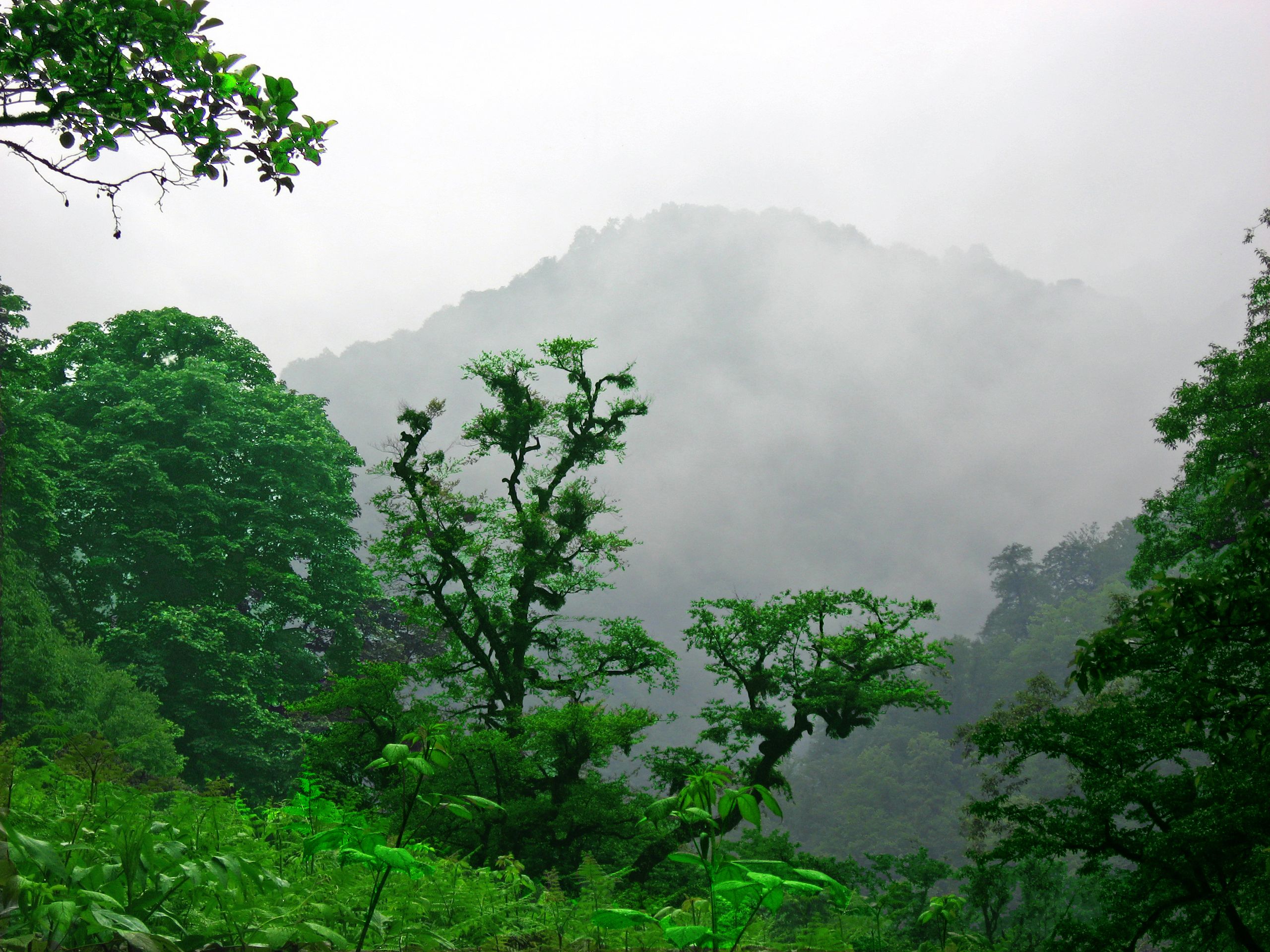by Austin Bodetti
While Western think tanks have drawn attention to droughts and floods in Iran, the news media has ignored another critical environmental issue there: deforestation. Between 1900 and 2012, Iran’s forest acreage decreased from 19 million acres to 14.4 million, shrinking to 10.7 million by 2015. That year, Esmail Kahrom, an advisor to the Iranian Environment Department, predicted, “With the current deforestation, Iran will have no forest in the next seventy-five to a hundred years.”
“The problem is big if you consider the proportion of Iran’s forests to its total land,” says Zahed Shakeri, an assistant professor of forest ecology at the University of Kurdistan. “Since Iran is located in an arid zone, forests and other vegetation types have an important role in different aspects of life—social, ecological, and economic. Most of the forests are located on fertile soils, so, traditionally, the demand for changing land use to agriculture is high. Nowadays, many forested lands around the cities are becoming residential, commercial, or industrial areas.”
A number of factors have fueled deforestation in Iran, some caused by the country’s aggressive pursuit of economic development, others outside Iranian officials’ control. Contributors include construction, illegal logging, overgrazing, and wildfires spurred by climate change. The legacy of economic sanctions on Iran has also influenced this trend. As Iran has endeavored to spur its sanctions-afflicted economy, the country has built deforestation-inducing infrastructure.
“We lost some parts of our western forests in the Zagros Mountains during the war between Iran and Iraq and also the Caspian forests from mass tourism, land use changes, and mismanagement of forest harvesting,” recalls Naghmeh Mobarghaee, an associate professor of environmental planning at the Environmental Science Research Institute at Shahid Beheshti University.
Given forests’ ability to store excess rainwater, preventing disastrous runoff and retaining water for human consumption, deforestation in Iran has aggravated other environmental issues. Some environmental scientists blame the loss of trees for an increase in deadly Iranian floods.
“In the north and northeast, especially in Golestan, deforestation has been going on for quite a while,” says Amir AghaKouchak, a professor of civil and environmental engineering and earth system science at the University of California, Irvine, who has studied deforestation in Iran with satellite imagery. “Deforestation certainly played a role in the floods there earlier this year and previous years, and the problem is only expanding in Golestan and across the rest of Iran.”
From the independent parliamentarian Jalal Mahmoudzadeh to the hardline newspaper Kayhan, Iranians across the political spectrum have expressed their concern. Even the National Council of Resistance of Iran, an advocacy group linked to the People’s Mujahedin of Iran that spends most of its time pushing for regime change, has highlighted the environmental issue.
Iranian officials responded to these calls by establishing what they dub “National Tree-Planting Day,” initiating a crackdown on illegal logging, and requesting assistance from the international community, but some Iranian experts remain skeptical of these efforts.
“The Iranian government is also responsible for the problem—especially through inappropriate development plans, such as constructing irrelevant dams and changing the hydrologic systems, powerlines, highways, mines, and so on and likewise through the pervasive corruption within the government itself,” Shakeri tells LobeLog. “Some top members of the Iranian Parliament and even some ranking officials in Iranian ministries are among the biggest speculators who have ordered mass changes of land use in different forest ecosystems.”
Iran’s foresters argue that the country must adopt a more comprehensive policy if it wants to win its ongoing battle with deforestation, noting that Iranian forests will take many years to heal. The Tehran-based environmental scientist Mahdi Kolahi has proposed “a ‘transition period’ for at least ten years that aims not to cut any tree but preserves and manages forests and woodlands and extents by means of spontaneous regeneration, active planting, or both.”
Neighboring countries offer their own examples of what Iran might do to limit or even reverse deforestation. In Turkey, environmentalists are pressuring the government to limit the ability of foreign companies to clear forests. In Pakistan, a country facing an ecological crisis no less dire than Iran’s, officials masterminded a successful campaign to plant one billion trees.
“At the moment, Iran’s strategy is to protect forests from farmers, grazing, harvesting, and small-scale land use changes,” concludes Shakeri, “but there is no master strategy to address the problem in the right context. Iran must fight against high-level corruption, especially in the field of changing land use; apply expert knowledge when designing development plans in forest ecosystems; increase Iranians’ awareness of deforestation and its outcomes, especially via social media; and use traditional knowledge to protect forest ecosystems.”
As deforestation in Iran grows worse, the need for intervention grows more urgent. Mehr News Agency, part of Iran’s state-owned media, reported in 2016 that fifty thousand acres of Iranian forests suffered damage or destruction every minute, speaking to the extent of the problem.
While sanctions and wider tensions with the United States have likely hindered Iran’s ability to invest in environmental protection and, in particular, afforestation and reforestation, the extent of the country’s potential ecological crisis calls for an ambitious environmental policy. Iran can expect at least some assistance from the international community. The United Nations Development Program is already supporting reforestation in Golestan Province.
Spearheading a campaign against deforestation would allow Iran to overcome some of its wider challenges with environmental issues, given that forests can lower the frequency of droughts and floods that bedevil the country. As Afghanistan, Armenia, Iraq, Turkmenistan, and Iran’s other neighbors wage their own battles against deforestation, the need for reforestation has become all the more apparent. Iranians have shown the will to save their country’s forests, and reforesting Iran will secure it from some of global warming’s most devastating side effects.
“Improving land management and reforestation, if possible, would have a significant impact on decreasing floods in the long run,” argues AghaKouchak. “Of course, it requires investment and takes time for trees to grow, but they offer a more natural, less expensive alternative to other solutions on the table, such as large dams. A healthy forest would make a huge difference.”
Austin Bodetti studies the intersection of Islam, culture, and politics in Africa and Asia. He has conducted fieldwork in Bosnia, Indonesia, Iraq, Myanmar, Nicaragua, Oman, South Sudan, Thailand, and Uganda, and his research has appeared in The Daily Beast, USA Today, Vox, and Wired.






Ayatollahs dellusional quest for world domination has sapped resources from other departments in the government. Ancient Iranian culture put ecology its highest priority. Respect for the planet was the most important principle in the Zend-Avesta. Heaven was seen to be on Earth.